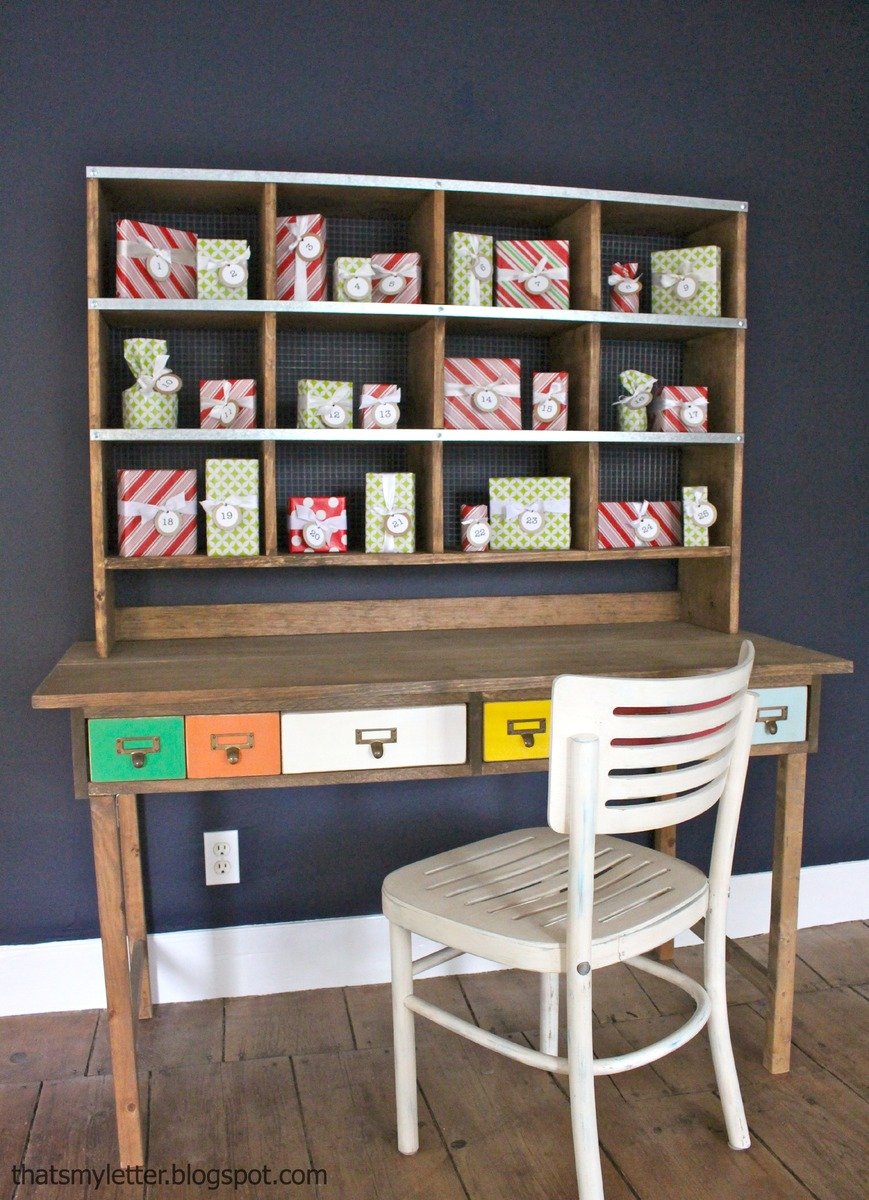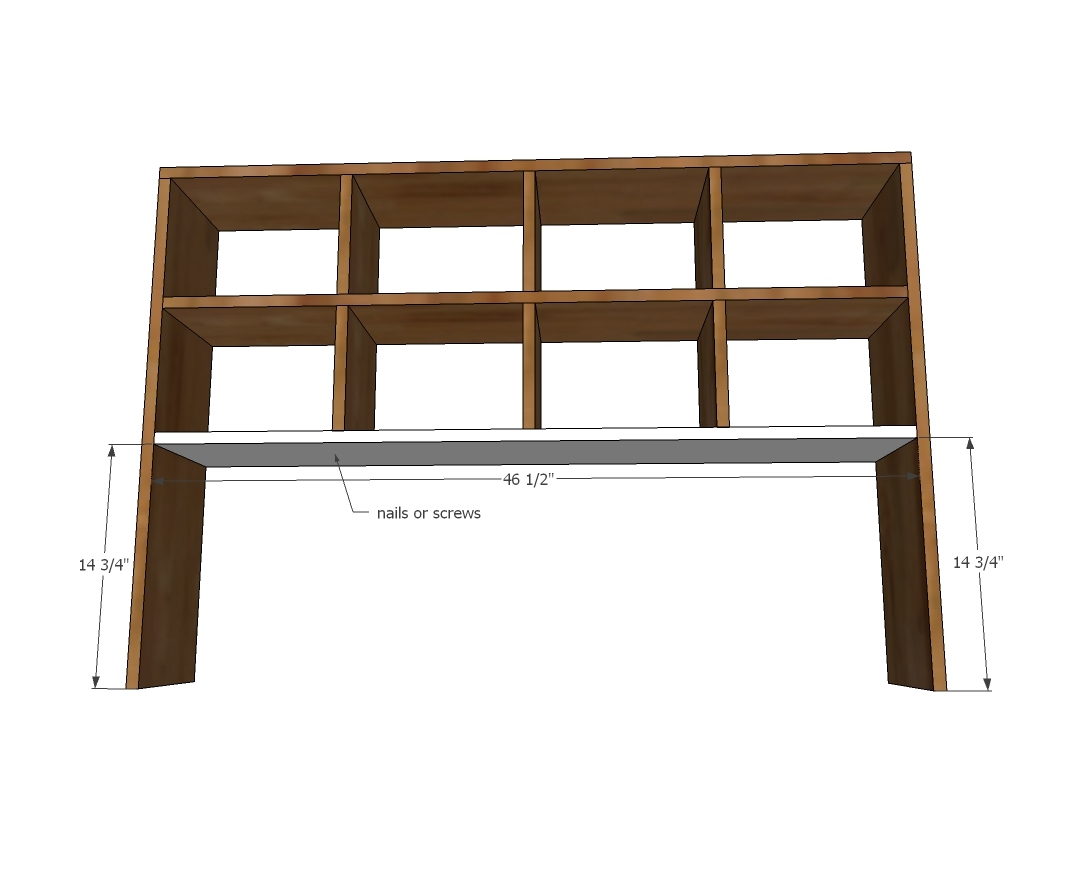
DIY wood and metal industrial style storage hutch

Preparation
2 - 1x10 @ 8 feet long (cut top and shelves out of these)
1 - 1x10 @ 12 feet long (cut dividers and sides out of these)
1 - 1x3 @ 4 feet long
2 - 1x10 @ 32-1/4"
1 - 1x10 @ 48"
3 - 1x10 @ 46-1/2"
9 - 1x10 @ 8"
1 - 1x3 @ 46-1/2"
Please read through the entire plan and all comments before beginning this project. It is also advisable to review the Getting Started Section. Take all necessary precautions to build safely and smartly. Work on a clean level surface, free of imperfections or debris. Always use straight boards. Check for square after each step. Always predrill holes before attaching with screws. Use glue with finish nails for a stronger hold. Wipe excess glue off bare wood for stained projects, as dried glue will not take stain. Be safe, have fun, and ask for help if you need it. Good luck!
Instructions
Step 1
Step 3
Step 4
Step 6
Step 7
Attach metal pieces to front and hardware cloth/chicken wire to back. Jaime has more information on the types of screws she used for the metal and how she attached the hardware cloth here.
It is always recommended to apply a test coat on a hidden area or scrap piece to ensure color evenness and adhesion. Use primer or wood conditioner as needed.



























